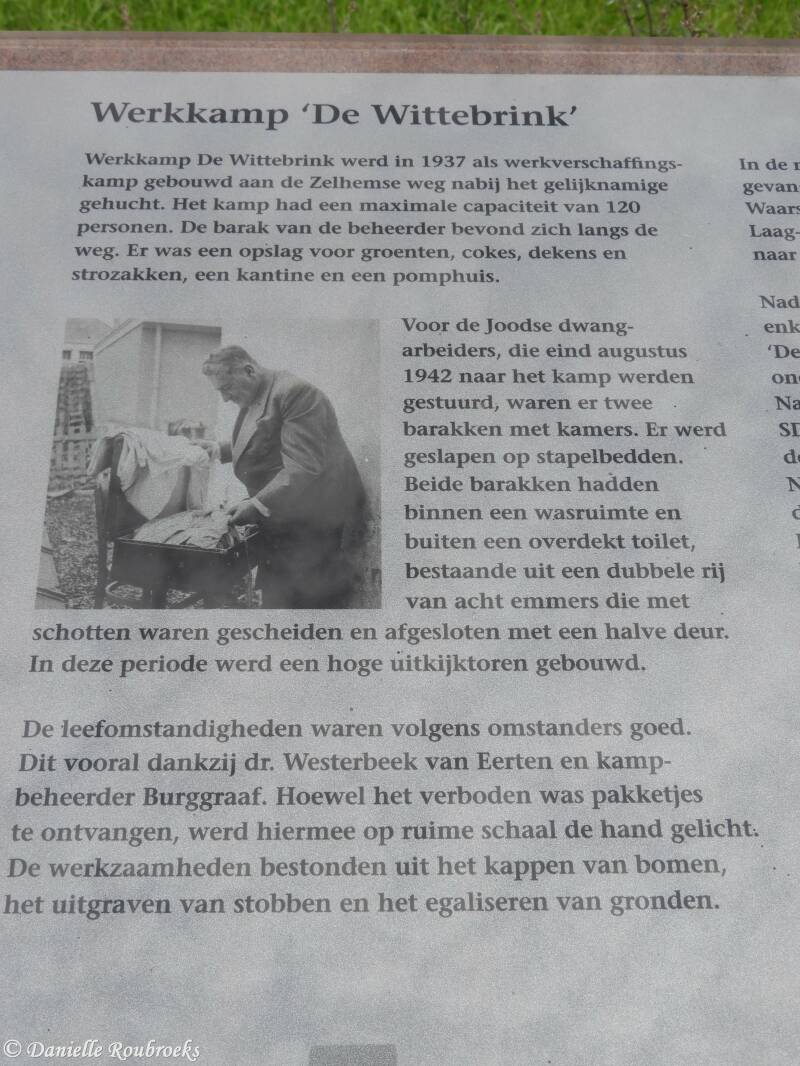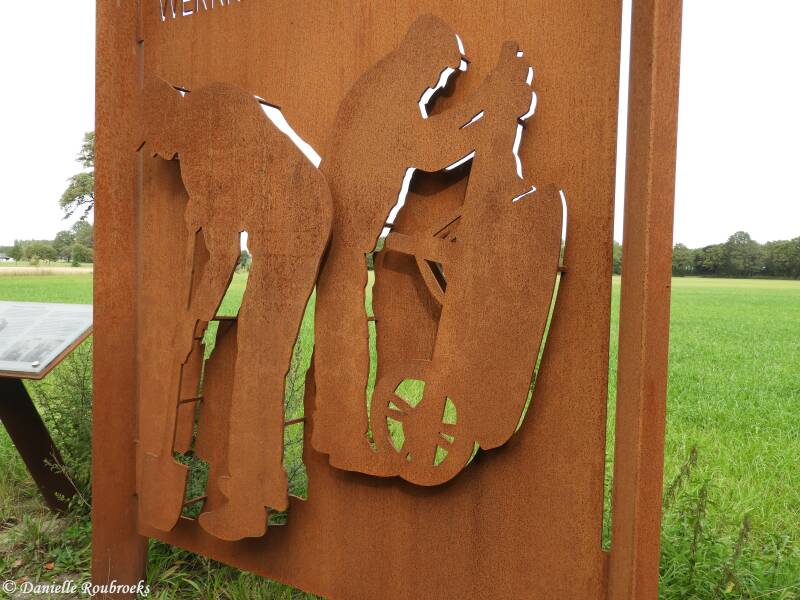Hummelo - Memorial Labour Camp de Wittebrink
Historical Information
The Jewish labor camp De Wittebrink was on Zelhemseweg, near the hamlet of the same name, not far from Hummelo. The camp was already built in 1937 with a maximum capacity of approximately 120 people, which could be accommodated in two living barracks. The barrack of manager Burggraaf was on the main road. There was also a storage for vegetables and coke, a canteen, a storage for blankets and straw bags and a pump house.
At the end of August 1942 Jewish forced labourers arrived in De Wittebrink. They slept on bunk beds in the living barracks. These barracks had a laundry room inside and a primitive toilet outside. It consisted of a double row of eight buckets, separated by bulkheads, fitted with a roof and closed with half a door. According to bystanders, the living conditions were good, partly due to the assistance provided by Dr. Westerbeek van Eerten and the camp manager. Although it was forbidden to receive packages, countless were sent. The work probably consisted of felling trees, digging out stumps and levelling grounds. A high watchtower was also built during this period.
In the night of 2 to 3 October 1942, the Jewish forced laborer had to walk to Hummelo under surveillance. They probably then went by tram from Laag-Keppel to Dieren and from there to Arnhem. After the Jewish forced labourers left, De Wittebrink was used to shelter a few dozen young people from the Government Education Foundation 'De Kruisberg' in Doetinchem. In the fall of 1944 a mother with seven children lived in one of the barracks.
After the liberation, the camp was given a new purpose: in the barracks there were interned NSB, land guards, former SS and SD. After that, the camp was a transit camp for German prisoners of war for some time. The barracks were finally demolished in 1956, after being used for a number of years as a production hall for egg sorting machines.












